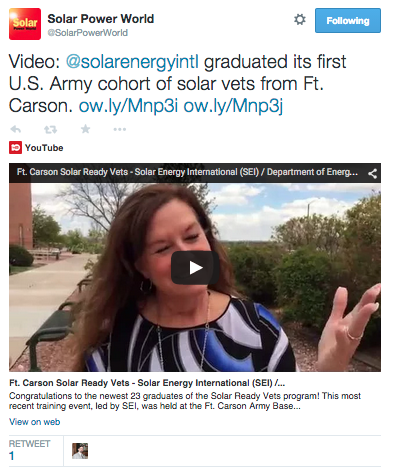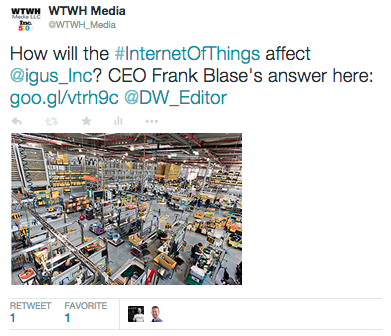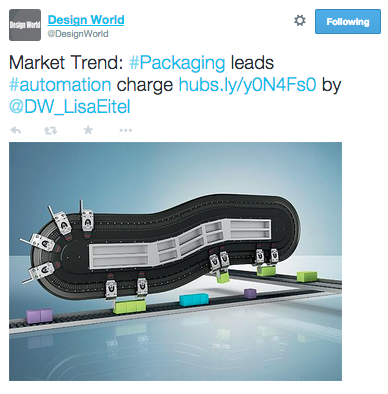![Conlan O'Leary, CEO of Sighten]()
Conlan O’Leary, CEO of Sighten
Sighten, a software platform for the residential and commercial solar industry, provides a comprehensive solution to manage all aspects of the solar lifecycle including CRM, system design and proposals, and asset management. CEO Conlan O’Leary spoke with Solar Power World recently about the company and its software.
How is Sighten different from other solar software packages?
While there has been a lot of innovation in the solar software market recently, installers are still asking, “How does all of this fit together?” Lots of solar software startups have been working on specific nodes in the solar workflow like design, usage data, utility rates, etc., but most installers need and prefer for that functionality to be rolled up and put into a seamless package. For this reason, we’ve pursued a comprehensive platform that is customer-centric. Sighten is an application that a company could truly run their business on, as opposed to point solutions that solve very specific problems and need to be plugged in to a broader system.
What benefits do installers receive from using Sighten?
The overarching themes we’ve heard from customers are related to the numerous positive impacts of simplifying and consolidating business functionality. They’re able to grow their businesses and sell and install more solar, which is the most important goal for most companies. At the same time, they can achieve that growth while managing costs effectively and improving margins. They can use the same resources but get more mileage out of them.
Our customers can reduce all types of costs because they’re doing things more efficiently by leveraging best-in-class technology. For example, important messages aren’t getting lost in email. Teams can coordinate easily because they’re all running on the same platform.
Is there a utility-scale application for Sighten?
As solar projects get bigger, there is much more customization involved. A utility scale project, which can represent hundreds of millions of dollars, will always have an engineering team come out to the site, and you’ll have a specific financial model built for that project. As you go down in scale, however, it really is about having repeatable processes. And if you’re doing everything on a one-off basis in the residential sector, as is common in utility-scale, your costs will be high and you likely won’t be competitive. Sighten could work for utility scale developers, but the same need is not necessarily there.
When it comes to assisting the finance community, what can Sighten do?
Sighten has several applications for the finance side of the solar industry. We have portfolio and asset management modules that offer real-time data feeds and sophisticated analysis tools to quickly understand what’s happening with portfolios of solar projects. This is a dramatic improvement for investors who are used to getting monthly Excel reports that often have data integrity issues and limited flexibility in terms of analytical tools. In fact, some investors have called our platform a “Bloomberg Terminal” for the solar asset class.
We also help capital providers by getting them to market faster. There have been a lot of new lenders and PACE providers entering the residential and commercial solar markets. They have been a huge boon to the industry, but a lot of these new companies haven’t had the luxury of being in solar for years or having their own software team. They’re excited when they can partner with Sighten and go from 0 to 60 very quickly and start financing solar projects faster.
Do I have to be an expert to use Sighten?
Our mantra is “simplify complexity.” Ultimately, we want to deliver a really intuitive, easy-to-use software application that doesn’t sacrifice accuracy or rigor in the underlying calculations. That’s done through a painstaking design process and constant customer interaction, where we make sure everything is easy to use. So I’d say “no” to your question. Sighten makes what was previously complex and difficult for sales teams or investment teams simple, while maintaining the integrity of underlying calculations and workflows.
Sighten co-founder Graham Hommel and you have backgrounds at Clean Power Finance. How did that experience shape Sighten?
Our time at CPF was really formative as we helped build the financing capabilities there. It was a turbo-charged education on the residential solar industry. We really enjoyed our time there, and we met a lot of incredibly intelligent people who have moved the solar industry forward. When we decided to leave, it was really about Graham and I wanting to focus on pure software. I’m still a shareholder so I definitely wish them the best.
Sighten secured $3.5 million in venture capital financing in November from Obvious Ventures. What are you doing with that money?
As a software-as-a-service company, our biggest cost is headcount. We made a decision early on that the product was very important in this market. That may seem obvious, but a lot of software companies in the space have pursued an outsourced software engineering strategy, and I think that’s akin to saying that a simplified product will suffice. For those companies, it’s more about getting to market fast. We have 28 full-time people all based in the US and more than half of those are software engineers. The vast majority of that $3.5 million will go toward continuing to hire and assemble the best software team in the solar industry and ensuring that we have, by far, the most advanced software toolset for solar companies. But we will also invest in sales and marketing to make sure that this great product is getting out into the market.
What can you tell me about the solar project design aspect of the program?
We have a full design tool within the application. Harkening back to an earlier question, we strive to make the design functionality intuitive without sacrificing rigor and accuracy. There has been a lot of innovation in system design, but I think our ultimate customer is the sales team, not necessarily dedicated system designers. So it’s not a replica of AutoCAD, but it’s an easy-to-use design tool to get a quick, accurate proposal to the customer. I’m proud of that functionality, and we’ll be improving it rapidly in the first half of 2016.
In what form can you purchase Sighten?
We have a lot of flexibility in deployment. Because we have a lot of functionality, we recognize that some customers want to focus on a certain part of the platform, at least to start with. Fundamentally, it’s an a la carte offering. For enterprise customers, we’ll put together detailed plans and make sure they’re getting the right package for their needs. We also have an out-of-the-box offering for customers that don’t need as much configuration and who want to be up and running as fast as possible. Many customers have started selling and closing deals in a matter of days. That’s very important for us. We want people to be successful with Sighten immediately after signing a contract. You can go to our website, request a demo and sign up at any time.
Why have you chosen solar as your industry?
Throughout my career I’ve worked on projects and at companies with an environmental focus. I first worked in environmental commodities trading. When that market didn’t materialize, I worked in cleantech investment banking, and then I was at Clean Power Finance.
I care deeply about the environment, and I think climate change is the seminal issue of our generation and of our time, so I have tried to align myself with interesting, challenging work and innovative companies that are addressing these issues. I think Sighten is the culmination of that focus. It’s easy for me to hop out of bed in the morning because I know that, as we’re successful and as our customers are successful, we’re making a big dent in carbon emissions and positively impacting society.
How can people learn more about Sighten?
They can go to our website, sighten.io, and there are descriptions about our product and more information about the team. The easiest way to get in touch with us is to just request a demo. A representative will be in touch almost immediately, and we’ll see how we can work together.
Solar Power World
![]()
 , the European market leader for smart storage systems, has announced a partnership with SolarWorld, the largest crystalline-silicon solar manufacturer in the U.S. and PetersenDean, the nation’s largest residential roofing company with more than a million roofs under its belt. This new package brings best-in-class solar-plus-storage technology to the U.S. market and gives people a straightforward access for using renewable energy. Additionally sonnen is working with Spruce, an expert in residential solar and efficiency financing, to develop new financing for energy storage.
, the European market leader for smart storage systems, has announced a partnership with SolarWorld, the largest crystalline-silicon solar manufacturer in the U.S. and PetersenDean, the nation’s largest residential roofing company with more than a million roofs under its belt. This new package brings best-in-class solar-plus-storage technology to the U.S. market and gives people a straightforward access for using renewable energy. Additionally sonnen is working with Spruce, an expert in residential solar and efficiency financing, to develop new financing for energy storage. , the European market leader for smart storage systems, has announced a partnership with SolarWorld, the largest crystalline-silicon solar manufacturer in the U.S. and PetersenDean, the nation’s largest residential roofing company with more than a million roofs under its belt. This new package brings best-in-class solar-plus-storage technology to the U.S. market and gives people a straightforward access for using renewable energy. Additionally sonnen is working with Spruce, an expert in residential solar and efficiency financing, to develop new financing for energy storage.
, the European market leader for smart storage systems, has announced a partnership with SolarWorld, the largest crystalline-silicon solar manufacturer in the U.S. and PetersenDean, the nation’s largest residential roofing company with more than a million roofs under its belt. This new package brings best-in-class solar-plus-storage technology to the U.S. market and gives people a straightforward access for using renewable energy. Additionally sonnen is working with Spruce, an expert in residential solar and efficiency financing, to develop new financing for energy storage.
 SPW: How and why are you working with KACO new energy?
SPW: How and why are you working with KACO new energy?

 Article by Megan Birney, Director of Strategic Affairs,
Article by Megan Birney, Director of Strategic Affairs, 




 “The extension of the tax credit relieves pressure on the industry to complete projects ahead of the 2016 deadline and breathes new life into the U.S. solar industry” said Camron Barati, North America solar analyst for IHS Technology. “Many feared the solar industry in the United States, which has experienced tremendous growth over the last several years, might collapse in 2017 without an extension of the ITC.”
“The extension of the tax credit relieves pressure on the industry to complete projects ahead of the 2016 deadline and breathes new life into the U.S. solar industry” said Camron Barati, North America solar analyst for IHS Technology. “Many feared the solar industry in the United States, which has experienced tremendous growth over the last several years, might collapse in 2017 without an extension of the ITC.”





 At the Smart Energy Summit: Engaging the Consumer, February 22-24, in Austin, TX, Parks Associates analysts and solar industry executives, including Vivint Solar, Austin Energy, Silver Spring Networks, SunPower and Enphase, will examine the role of this technology in the smart home and how solar combined with storage innovations will boost the role of energy in the IoT.
At the Smart Energy Summit: Engaging the Consumer, February 22-24, in Austin, TX, Parks Associates analysts and solar industry executives, including Vivint Solar, Austin Energy, Silver Spring Networks, SunPower and Enphase, will examine the role of this technology in the smart home and how solar combined with storage innovations will boost the role of energy in the IoT. Engineered to streamline wire harness installation, Ratchet P Clamp also helps reduce maintenance costs. The one-piece PA66 nylon solid body and stamped metal mounting plate create a versatile, easy to use and durable alternative to traditional P clamps.
Engineered to streamline wire harness installation, Ratchet P Clamp also helps reduce maintenance costs. The one-piece PA66 nylon solid body and stamped metal mounting plate create a versatile, easy to use and durable alternative to traditional P clamps.  Tigo announced the availability of the
Tigo announced the availability of the 

